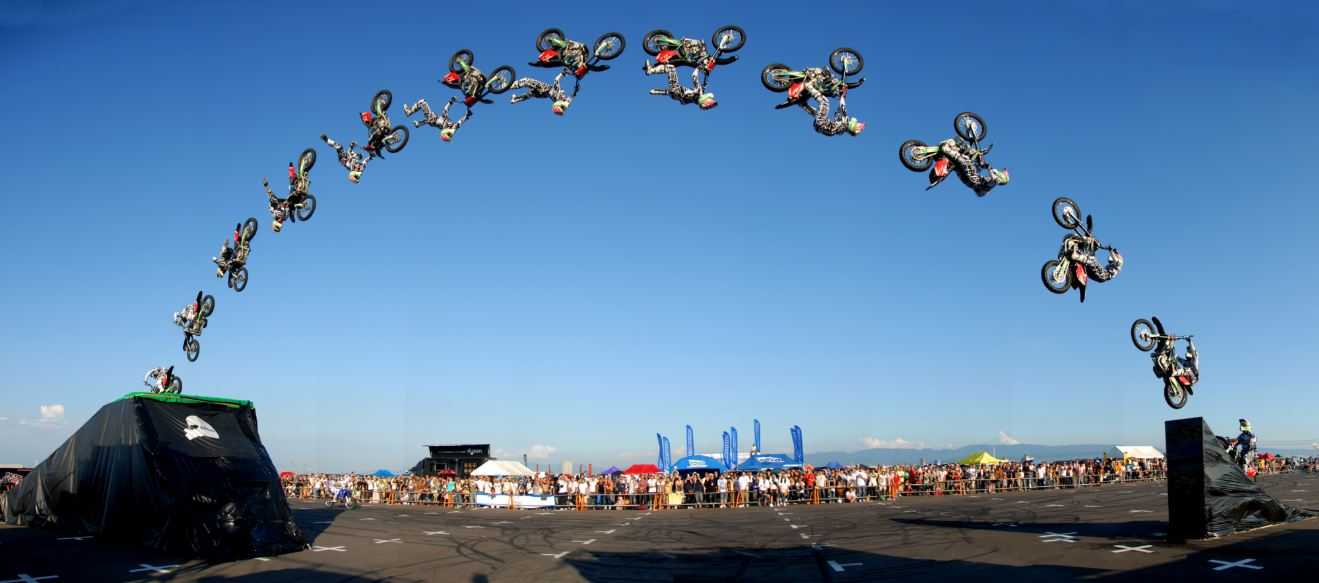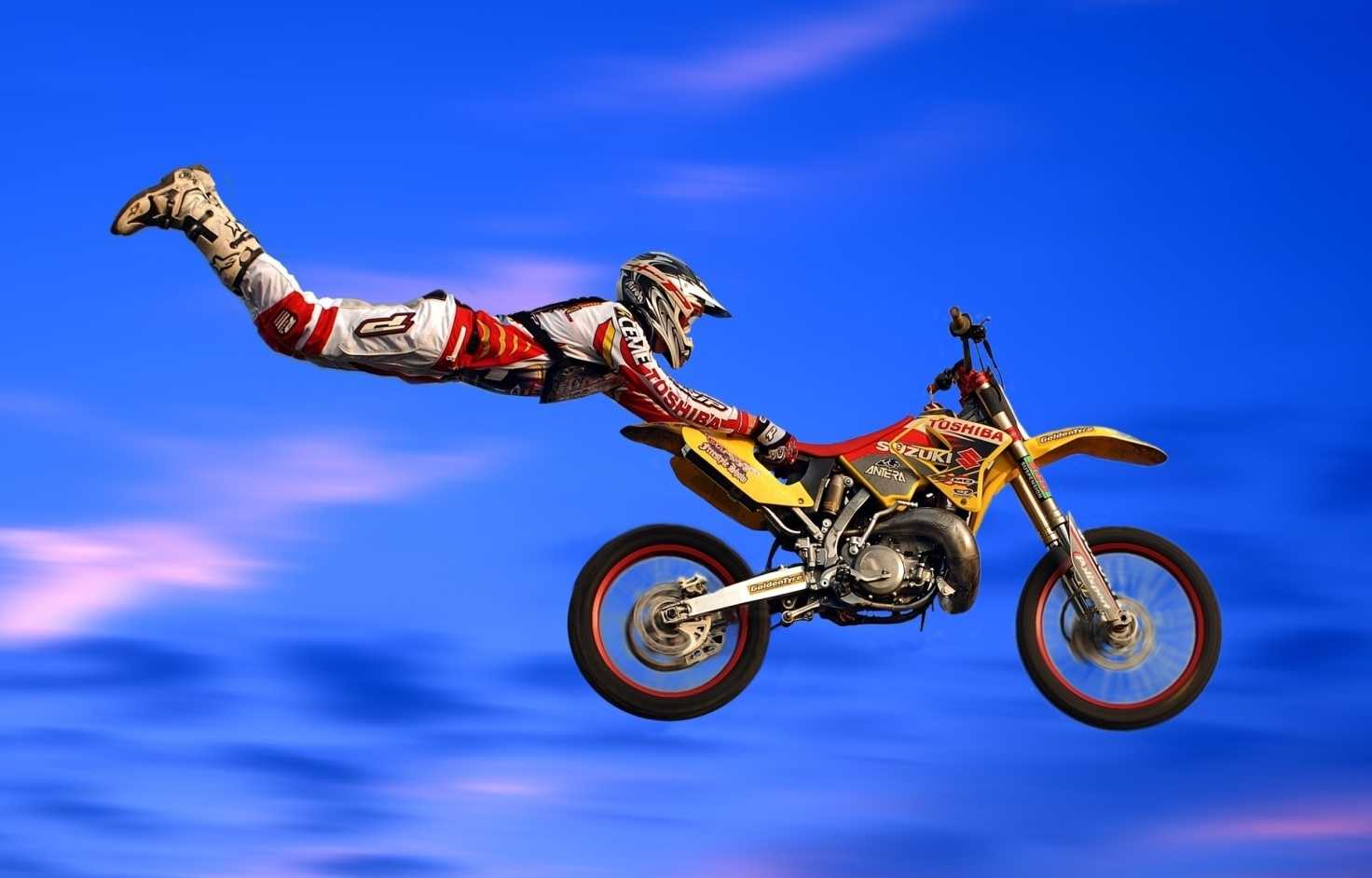Freestyle Motocross Racing: Summary, History & Facts
Motocross Is all about big jumps, big engines and big wipe-outs. Motocross racing really began to advance as a sport after World War II, with races being run on dirt ovals or horse race tracks. Races were later held on bigger tracks and the courses were modified to include larger banks and bigger jumps. Post World War II motorcycle manufacturing, vital to the war effort, became a fiery industry as civilian demand bursts both in Europe and further afield. Bikes went from 50cc to 250cc engines in the 1950s and 60s, resulting in bikes that had greater agility and that were lighter and speedy than their predecessors, all elements which were essential for motocross racing.
By the 1980s, the top motocross riders were racing in large stadiums in front of huge audiences. One of the biggest names in motocross racing now is teenage star, James “Bubba” Stewart, who has been winning national races since he was 15.
Motocross – Freestyle
In the 1990s, the sport of freestyle motocross was born. Instead of racing around a track filled with jumps, hills and other obstacles, freestyle riders would perform different high-flying tricks on their bikes like backflips, superman grabs and 360s.
Freestyle motocross (also known as FMX) is a level on the sport of motocross in which motorcycle riders attempt to affect judges with jumps and stunts.
The two main categories of freestyle events are:
- Big Air (popular as Best Trick), in which each rider gets two jumps — usually covering more than 75 ft (22.8m) — from a dirt-covered ramp. A panel of judges assesses the style, trick difficulty, and originality and declares a score on a 100-point scale. Each rider’s highest single-jump score is compared; top score wins.
- Freestyle motocross, the older of the two events, in which riders conducts two routines, each lasting between 90 seconds and 14 minutes, on a course consisting of multiple jumps of varying lengths and angles that generally occupy one to two acres (.4 to .8 hectares). Like Big Air, a panel of judges assigns each contestant a score based on a 100-point scale, looking for difficult tricks and variances over jumps.
Besides performing mind-blowing stunts, freestyle motocross riders have also carried some of the nastiest wipeouts in the history of action sports – broken spleens, fractured collarbones and shattered ankles are just some of the gruesome injuries that have resulted from death-defying stunts that go wrong. The masters of freestyle motocross include riders like Mike Metzger, Travis Pastrana and Nate Adams.
Motocross – Getting Started:
Motocross is a sport that can be amusement, physically demanding and very exhilarating. The best way to learn, without hurting yourself, is by taking lessons from an experienced rider. Besides being fun, motocross can also be exorbitant. The cost of a bike, gear and transportation to a track for races can end up costing some pretty major bling. Recently, motocross has gradually developed new forms of riding and disciplines ranging from indoor stadium arena events such as Supercross and Arenacross to Freestyle Motocross where riders display an array of skills while performing thrilling jumps and stunts.
Motocross Facts and Records: (source: Internet)
- The longest jumpever landed on a dirt bike is 278 feet by Trigger Gumm.
- In 2002, Caleb Wyatt became the first motocross rider to land a backflip.
- Brian Deegan has won ten medals in motocross at the X Games – more than any other rider.
- Freestyle motocross is now part of the Winter X Games, with riders performing tricks off snow jumps.
- Dirt bikes are lightweight, off-road motorcycles built with a rugged frame, special tires and stiff suspension to navigate hilly, rough terrain in all types of weather.
- Dirt bikes are used in motocross racing events held in North America, Europe and Asia.
- Dirt bikes are used with an emphasis on agility and lightweight manoeuvrability, and as a result they have an engine size less than 500cc.
- The bikes are powered either by a two-stroke or four-stoke
- Dirt bikes are not licensed because they are illegal on streets and highways, but some U.S. states require a sticker registration fee.
- The father of the modern dirt bike is the British-made BSA.
- By the 1970s, Japanese motorcycle makers muscled out the British bikes with Yamaha, Suzuki, Kawasaki and
- Freestyle motocross or FMX started in the 1990’s.
- Motocross racing became so popular in the United States that the first stadium off-road event was held at the Los Angeles Coliseum in 1972.
- Motocross evolved in the UK out of trials.



